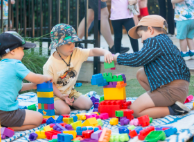Imagination is more than just make-believe—it is a powerful tool that fuels creativity, problem-solving, and emotional growth in young children. In the early years of development, a child’s mind is especially open to new ideas, stories, and possibilities. Nurturing imagination helps children understand the world around them while building essential life skills.
Why Imagination Matters
Imaginative play gives children the freedom to explore different roles, scenarios, and feelings. Whether pretending to be a doctor, building a castle out of blocks, or inventing a story about talking animals, children are actively developing their thinking skills. These creative moments are crucial for mental flexibility, empathy, and confidence.
When a child uses imagination, they’re practicing how to solve problems and think outside the box. For example, a child may use a cardboard box as a spaceship or turn a stick into a magic wand. These actions demonstrate their ability to see beyond what is physically present, a skill that supports future learning and innovation.
Emotional and Social Benefits
Imagination also plays a vital role in emotional development. Through pretend play, children express feelings, work through fears, and practice empathy. A child who pretends to comfort a sad doll is learning how to care for others in real life.
Socially, imaginative play encourages cooperation. When children engage in group storytelling or role-playing games, they learn to negotiate roles, take turns, and build shared experiences with peers. These interactions strengthen communication and help form strong social bonds.
How Adults Can Support Imaginative Growth
Parents, caregivers, and teachers can support imagination by creating an environment rich with opportunities for creativity. Simple materials such as dress-up clothes, puppets, art supplies, and open-ended toys like blocks or clay allow children to invent and explore freely.
Reading books together also fuels imagination by introducing new worlds and characters. Asking open-ended questions such as “What do you think happens next?” or “How would you solve this problem?” invites children to think creatively.
Limiting structured activities and screen time in favor of free play encourages children to direct their own stories and ideas. Giving children time and space to imagine is one of the most valuable gifts we can offer during these early years.
Conclusion
Imagination is the heart of childhood. It shapes how children see themselves and their world. By encouraging creativity and play, we not only bring joy to a child’s life but also lay the foundation for a lifetime of curiosity, learning, and problem-solving. Supporting imagination isn’t just about play—it’s about preparing children to thrive.


